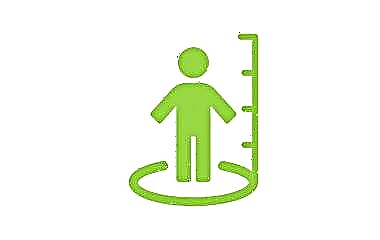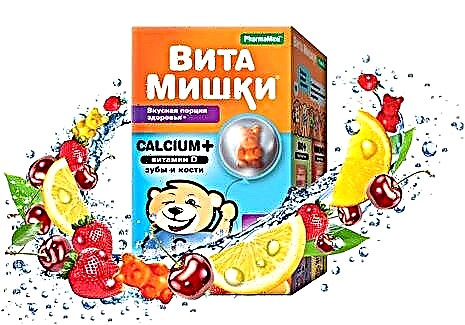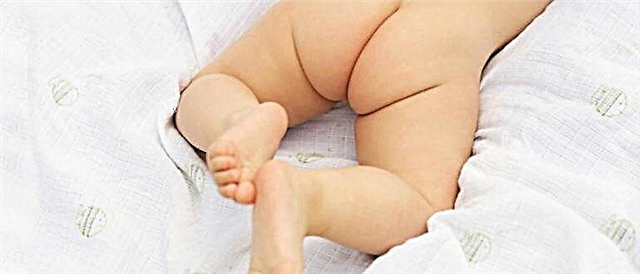How much has been said about temperature, and will be said more than once.
Most often, the temperature rises in the evening, a lot of diseases start with fever, not only ARVI.
Nothing causes parents to panic more than a pronounced rise in body temperature in a child. And if this temperature does not go astray, it seems like a disaster. What is temperature? Why is it needed? And how to bring it down if everything has already been tried?
Physiology
Fever is one of the most important protective and adaptive reactions of the body. As the body temperature rises, all vital systems of the body (immune, respiratory, cardiovascular) are activated. Essentially, this process is regulated by the body.
Academician Pavlov wrote the following about this process: “There is a center - these are internal organs and a membrane - these are skin and mucous membranes. The center temperature is always constant, the shell temperature is always changing. The constancy of the temperature of the internal organs is maintained due to the inconstancy of the temperature of the skin, it is through it that the "extra" degrees are released. And this difference depends on heat production and heat transfer. "
Fever is a change in the heat balance caused by the action of endogenous pyrogens on the hypothalamic centers of thermoregulation.
A moderate increase in body temperature can be observed in the daytime in many healthy children, most often this increase is of a subfebrile nature - 37.3 - 37.5 ˚С.
The range of daily fluctuations in body temperature at a relatively constant ambient temperature in the first days of life is about 0.2 - 0.3 С, by 2 - 3 months it increases to 0.6 С, and by 3 - 5 years it reaches 1 ˚С ... The highest body temperature is observed between 17 and 19 hours, and the lowest in the interval between 4-7 hours. Fluctuations in body temperature reflect the state of physical and psycho-emotional activity of healthy children.

Fever stages
- stage one - temperature rise. Most often, parents notice that the child is shivering, the baby complains of a feeling of cold, especially when moving. At this stage, usually the processes of heat production prevail over the processes of heat transfer, breathing is reduced, sweating decreases;
- stage two - the stage of increased temperature. This is the stage at which parents usually sound the alarm. Heat transfer and heat production are usually approximately equal at this moment. The skin is red and hot to the touch;
- temperature reduction stage. At this stage, heat transfer prevails, the child's skin is red, there is active sweating, and breathing is quite frequent.
Perhaps it is because of this stage that the myth persists among the masses that it is necessary to sweat to get better. And it is this myth that makes thousands of parents wrap up an already feverish child, close windows and thereby only worsen the baby's condition, leading to hyperthermia - overheating.
Hyperthermia is a process that (unlike fever) is not regulated by the body. Can lead to disruption of the body's systems.
The most common causes of hyperthermia:

- pituitary tumors;
- brain injury;
- central nervous system infections;
- shock, sepsis;
- hyperthyroidism.
Hyperthermia occurs in young children, and is characterized by a violation of the heat transfer mechanism. The child is pale and cold.
Therefore, if the child is red and hot to the touch, and the temperature has risen to 39 ° C, this process in most cases will proceed favorably.
Temperature in a newborn baby
It often happens that a mother, who has just come from the hospital, measures the temperature of the baby, sees the figure 37.5˚C on the thermometer, gives the child paracetamol, measures the temperature again and realizes that there is no effect.
If the baby willingly takes the breast, does not worry, the umbilical wound is not red, everything is in order with the baby.
Newborn children adapt to life in this imperfect world, and their organ systems, including the processes of thermoregulation, also adapt.
Before giving the child the medicine, undress him completely, remove the diaper, put on the diaper, if you are worried about the furniture, check the temperature in the room where the baby is. It should be 18 - 22˚С. Ventilate the room and measure the temperature again. If the actions have an effect, you are likely overheating the child. If not, watch the baby. Perhaps he was crying or was quite active at the time of measuring the temperature or before him, or the baby has recently eaten. These facts also lead to an increase in body temperature.
If you are also confused by nasal congestion, discoloration of stools, severe anxiety in the child, reddening of the umbilical wound or discharge from it, it is better to consult a doctor.
And of course, you need to call a doctor if the temperature of the newborn is 38 ° C and above.
There is another group of children whose parents should be more alert than usual. These are children with somatic pathologies. Such as congenital heart defects, heart rhythm disturbances, epilepsy, diseases of the central nervous system, diseases of the thyroid gland, children who have previously had febrile seizures. These children have to bring down the temperature, which has not reached the figures of 38.5˚С. The tactics of lowering the temperature in these children is the same as in everyone else, only with lower numbers. And it is desirable to reduce the temperature of these children dramatically.
Why does the child's temperature not go astray, and what should I do?
This question occurs quite often, and very often parents make the same mistakes.

1) The first mistake is the diaper, or rather its presence. Nowadays, this thing has become an integral part in raising children, and many do not even imagine how to remove it from a child, and even for the whole day. The disadvantage of this thing is that when you put it on the baby's bottom, you also put it on the groin area, namely, it is rich in large blood vessels. Instead of giving off excess heat, the baby, thanks to such a "compress", adds himself an extra degree.
Try to replace the diaper with panties with gauze or old towels during the child's illness. Mesh panties are sometimes on sale. It is important that the groin area is as open and dry as possible. Unfortunately, this replacement will have to be changed every time after the child relieves.
2) Often mothers complain that they cannot bring down the temperature of the child, and it is stuffy and hot in the room where the sick child is.
In the room where the baby is located, the air temperature should be low 18 - 22˚С, and the humidity should be at least 70%.
The room must be ventilated regularly. First, it will reduce the number of pathogens in the room. Secondly, it will be easier for the child to breathe. Third, it will help you lower your baby's temperature.
3) Clothes. Attempts to wrap up more, give hot tea with raspberry jam, and do everything to get the child to sweat and thus recover can worsen the condition. Clothing should be made from natural fabrics. If the child is shivering, cover and warm.
But if you see the baby is hot and opening up, give him a sheet or a very light blanket.
4) Nutrition. Not feeding a baby or feeding for two are two extremes. If the child already knows how to speak, ask his opinion. Perhaps he wants some kind of fruit or a particularly tasty dish prepared by his mother. If the baby refuses, do not force him to eat, just put the washed fruits and vegetables in a prominent place.
In the diet, try to stick to more carbohydrate foods (vegetables, fruits, cereals), if the child is not averse to eating yogurt or kefir, also do not deny him this.
5) Incorrect calculation of the dosage of antipyretic drugs.

Dr. Komarovsky says: "Sit with your dad while your child is healthy, and calculate how much medicine you need for your child's weight."
The fact is that the calculation of the medicine on the package is made for the average child. Thus, if your baby weighs more than average, then you need more medicine than indicated on the spine of the package.
6) Rubdowns and cold compresses for white fever. This error is rare.
7) Rubbing with vodka, vinegar or water below the child's body temperature.
Vodka and vinegar increase the intoxication of the body and can lead to allergies or poisoning. Ice water can provoke a spasm of peripheral vessels and lead to a decrease in the heat transfer area.
8) Lack of drinking. If the child refuses to drink, and the parents cannot, or do not have sufficient desire to give him water.

The loss of fluid and salts with sweat and exhaled air can lead to a serious condition of the child and subsequently to the threshold of the intensive care unit.
High temperature control measures
Parents often say: "Nurofen does not bring down the temperature, what should I do?"
The effectiveness of the drug is assessed no earlier than 30 minutes after the child was given it. If the temperature after the drug has decreased by 0.5 - 1˚C, this means that the drug is working. Antipyretic drugs work for 4 - 6 hours, and after this time the temperature may rise again. It is very important to understand that by knocking down the temperature, you do not cure the disease, but only alleviate the patient's condition.
So, the child has a temperature above 39 ° C or higher, you gave antipyretics, but it did not help.
Your actions.
- Check the baby's arms and legs. If the child is pale and cold, the antipyretic will not work. Your task is to warm your arms and legs. Put on warm socks, rub your hands, give No-shpa or papaverine in an age-specific dosage.
- Check for the possibility that the child is overheating. Take off extra sweaters, quilts, leave only the essentials. Ventilate the room, humidify the air. If it's winter outside, turn down the temperature of the battery.
- Remove the diaper from the baby.
- If the baby is red and hot, place a waterproof sheet underneath and wipe with water at the baby's body temperature. That is, if the child has 40 ° C, then the water for wiping should be 40 ° C. You need to wipe only those areas where large vessels pass. These are the neck, armpits, heart area, groin, popliteal fossa. Do not touch your feet and hands. Cover the child with a light blanket, and after 5 minutes repeat the procedure, then measure the body temperature again.
- Physical cooling methods can also be applied. Take ice from the freezer, wrap it in a towel in several layers and place it over the child's head, at a distance of 1 - 2 cm from its surface.
- Do not forget to give your child water everything that the child drinks. Water, juices, teas will do, by all means give the child liquid and monitor the amount of urine excreted.
- Give your child saline solutions such as Regidron, Glucosolan.
- Do not try to lower the temperature of a sick child to 36.5˚Ϲ.
If all of the above did not help you, and the temperature has not moved a degree from 40 ° C in an hour, it is better to take the child to the hospital.
The temperature itself is not terrible. Parents are afraid of the child's illness, his condition at the same time, and the temperature is simply easier to fix and describe.
Dear parents, take a closer look at your sick child and formulate what else worries you. Perhaps this is an atypical behavior or the appearance of a rash that does not disappear with pressure, vomiting and complaints of abdominal pain, and the temperature is actually 37 ° C? In these cases, it is better for you to call an ambulance and go to the hospital to rule out serious illnesses.



